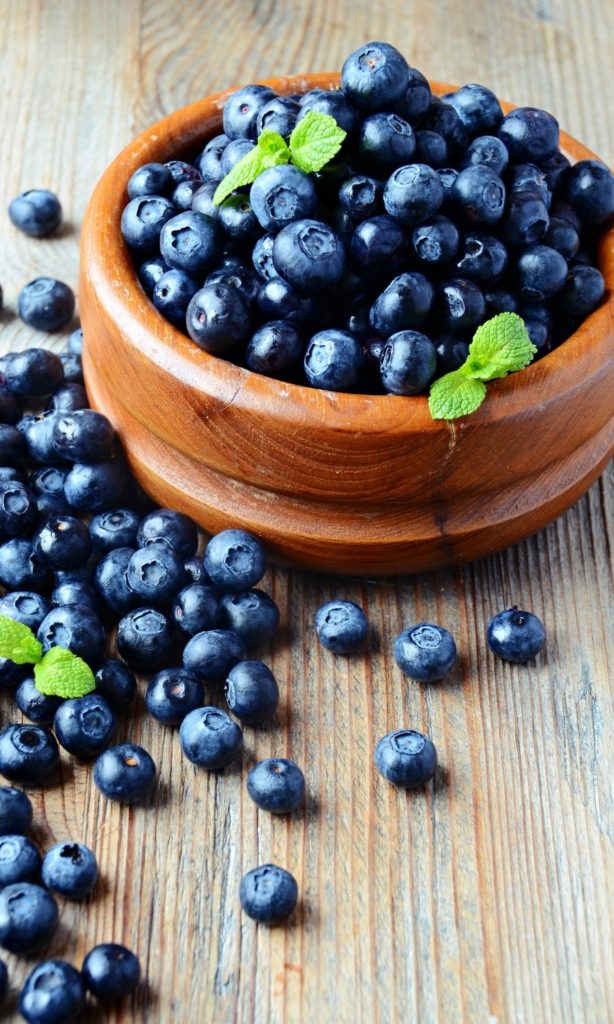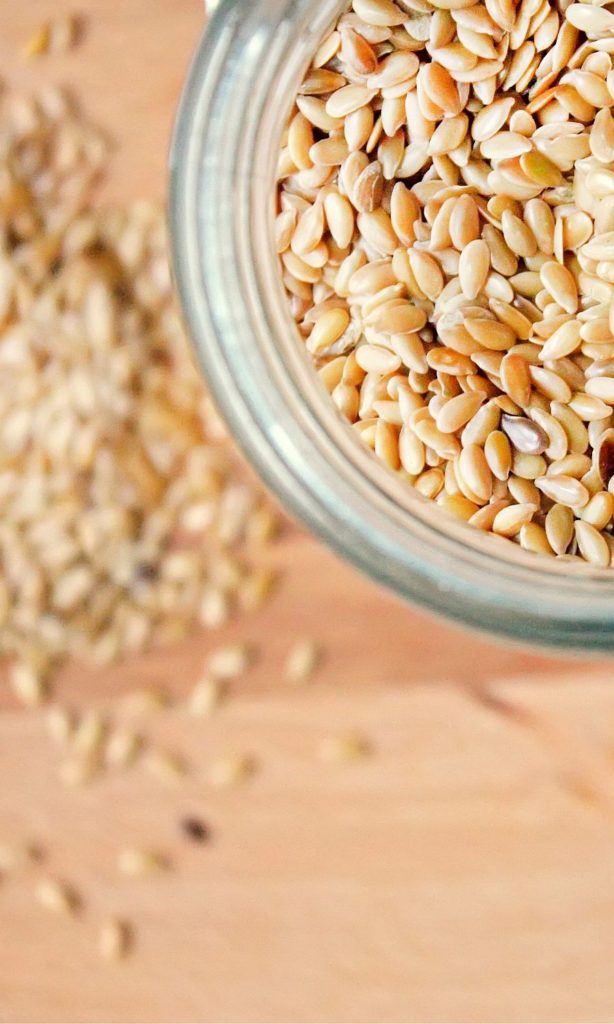Many bioactive phytochemicals can only be found in plant-based ingredients. In this article, we’ll talk about the benefits of phytonutrients in dog food.
Contents
Benefits Of Phytonutrients
Plants add lots of nutrients to our canine’s diet like dietary fibers, vitamins, minerals, fats, plant proteins, and carbohydrates.
But when our dogs eat plant ingredients they also ingest secondary metabolites like carotenoids, polyphenols, or phytosterols.
There are thousands of compounds only found in plant ingredients. Phytonutrients are one of the things that make fruits and vegetables a healthy addition to your canine’s meal plan.

Many plants are exploited for their particular phytochemical content, but not always for nutritional purposes.
Think of carnosic acid, a powerful antioxidant, that makes rosemary extract a natural preservative in many dog foods.
Phytochemicals can modulate physiological processes.
Some are absorbed directly in the small intestine while others are modified by the intestinal microbiome. Overall, the mechanisms behind their efficacy are barely understood.
According to some experimental studies, many phytochemicals have anti-oxidant and anti-inflammatory properties and provide a multitude of additional protective health effects[1,8].
Because of their benefits, bioactive plant compounds gain attention for nutraceutical applications or as functional food ingredients.

Although phytonutrients are not essential in a dog’s diet, many of them are considered healthy and valuable food components.
The authors of a 2021 study pointed out that phytonutrients from plant-based ingredients may be useful for health optimization and longevity[1].
And that the inclusion of plant-based foods, in proper amounts, also helps increase the content of some micronutrients (vitamins and minerals) that are generally low in some meat products.
Fun fact: Even wolves eat wild blueberries and other fruit to supplement their largely meat-based diet.
However, since there is no minimum or recommended intake level, not every manufacturer includes them in their formulas.
To our knowledge, the average intake of phytonutrients in the general dog population has not been estimated, but it is likely dependent on the owner’s choice of diet, treats and dietary supplements.
Tanprasertsuk et al. 2021[1]
Types Of Phytonutrients
So, let’s take a look at the different classes of phytonutrients:
Carotenoids
Many yellow or red fruits and vegetables or leafy vegetables are rich sources of carotenoids.
Carotenoids are a group of fat-soluble pigments also known as carotenes and xanthophylls.
These compounds have been shown to modulate the insulin response, fat metabolism, or immune system. They also might have benefits for dogs’ cognitive health[1].
The most abundant carotenoids in fruits and vegetables are α-carotene, β-carotene, cryptoxanthin, lycopene, lutein, and zeaxanthin.
Sources for carotenoids include carrots, sweet potatoes, spinach and other leafy vegetables, pumpkins, annatto, etc.

Some carotenoids like tomato lycopene or β-carotene are approved to be used as color additives.
And carotenoids, especially β-carotene, can act as vitamin A precursors aka provitamin A. Vitamin A is an essential nutrient important for healthy vision, skin, reproduction, or growth.
Dogs can cover their dietary needs purely from plant-based provitamin A sources. But they can also use preformed vitamin A from animal-based ingredients like animal liver, dairy, and eggs.
Phytosterols
These phytosteroids act as structural components that stabilize the biological membranes of plants. Plants also use them as precursors in the synthesis of several bioactive compounds.
Because of their similar structure, phytosterols compete with cholesterol for absorption in the intestines.
Phytosterols are found in plant oils like rapeseed oil or corn oil. Other notable sources include avocados, flax seeds, and peanuts.

But: Phytosterol intake from a normal diet likely doesn’t impact cholesterol absorption. Food has to be enriched with large amounts of phytosterols to noticeably reduce cholesterol levels.
And there seems to be a lack of evidence of any beneficial effect of low cholesterol intake in healthy dogs.
But phytosterol supplementation might actually be an interesting choice for dogs that suffer from hyperlipidemia[2].
Polyphenols
Polyphenols comprise several groups of phytochemicals which are classified based on their chemical structure:
Phenolic acids are mainly found in seeds, fruit peels, and leafy vegetables. Noteworthy sources include blueberries, kiwis, apples, corn, rice, and oats.
Some of these compounds seem to decrease inflammation and oxidative stress and may have health-protective effects[3,4].
Flavonoids are plant pigments that also fulfill a variety of other functions. They have been shown to have antioxidative, anti-inflammatory, antimutagenic, neuroprotective, antidiabetic, or anti-carcinogenic properties[5,6].
Flavonoids are found in fruit peels, flower petals, berries, spices, herbs, soybeans, and vegetables. One popular example is curcumin obtained from turmeric.
Soy isoflavones positively affect body condition. And flavonoids from avocado and soybean may be beneficial for joint health[1].
Anthocyanins in fruits and vegetables are natural pigments and potent antioxidants. They are anti-inflammatory and provide lots of other benefits[13].

Lignans are precursors to phytoestrogens and some of the intestinal microflora in mammals can convert them into active mammalian enterolignans[9].
Due to their estrogenic activity, they might play a role in preventing hormone-related diseases[7].
Lignans may also may an effect on fat metabolism. However, a possible health benefit for dogs is currently unclear.
Major sources of lignans are oilseeds like flax seeds, sesame seeds, and pumpkin seeds. Other foods containing lignans are whole grains and cereal bran, lentils and soybeans, dried seaweeds, nuts, broccoli, cabbage, apricots, and strawberries.

Stilbenes are found in grapes, blueberries, raspberries, mulberries, peanuts, or almonds. While dogs shouldn’t eat grapes, extracted resveratrol is sometimes used as a dietary supplement.
This substance modulates the immune system but there is mixed evidence of the actual effects of resveratrol in dogs.
Phytonutrients In Dog Food
Many manufacturers use ingredients like fresh carrots, pumpkins, squash, spinach, berries, apple, pears, kale, or other fruits and vegetables in their recipes.
But not very many of these ingredients seem to be added with the main purpose of providing phytonutrients.
Exceptions are foods that specifically highlight functional ingredients like bee pollen.
But still, whenever plant-based ingredients are present they may (intentionally or not) also provide phytochemicals[11].
We know little about the differences in bioavailability or metabolism of phytochemicals ingested from different food sources.
And depending on the intended purpose, manufacturers can choose from a variety of plant species and materials.
They can include whole or ground, fresh or dried plants.
Or they use by-products and pre-processed residues from plant processing industries or synthesized or extracted compounds.
Many plant compounds are sensitive to heat or light.
Since commercial dog food is often prepared under high heat and pressure, it loses some phytonutrients in the process.
Research has shown that fresh ingredients not only offer (phyto)nutrients but also contain a variety of microbes that may be beneficial for gut health[10]!
This makes fresh and low-processed whole plant ingredients probably the best sources of phytonutrients in your dog’s diet.

Overall, it seems like a great idea to start sharing some of your 5 a day and all their variety and health benefits with your doggo!
But…
Before supplementing your dog’s meal plan with fresh ingredients you should read up on things your dog should not eat.
Not every compound found in plant ingredients is good or healthy. For example, some secondary compounds found in legumes can impair nutrient absorption from the gastrointestinal tract.
And of course, there are many harmful substances found in nature you don’t want to expose your dog to.
As always: When in doubt, ask your vet!
Further Reading
[1] Tanprasertsuk et al. Roles of plant-based ingredients and phytonutrients in canine nutrition and health. J Anim Physiol Anim Nutr. 2021. https://doi.org/10.1111/jpn.13626
[2] Borin-Crivellenti et al. Effect of phytosterols on reducing low-density lipoprotein cholesterol in dogs. Domest Anim Endocrinol. 2021. https://doi.org/10.1016/j.domaniend.2021.106610
[3] Kumar & Goel. Phenolic acids: Natural versatile molecules with promising therapeutic applications. Biotechnol Rep. 2019. https://doi.org/10.1016/j.btre.2019.e00370
[4] Boz. Ferulic acid in cereals – a review. Czech J. Food Sci. 2015. https://www.agriculturejournals.cz/publicFiles/401_2014-CJFS.pdf
[5] Panche et al. Flavonoids: An overview. Journal of Nutritional Science. 2016. https://doi.org/10.1017/jns.2016.41
[6] Delage. Flavonoids. Linus Pauling Institute, Oregon State University. 2015.
[7] Adlercreutz. Lignans and Human Health. Critical Reviews in Clinical Laboratory Sciences. 2007. https://doi.org/10.1080/10408360701612942
[8] Luca et al. Bioactivity of dietary polyphenols: The role of metabolites. Critical Reviews in Food Science and Nutrition. 2020. https://doi.org/10.1080/10408398.2018.1546669
[9] Thompson et al. Mammalian lignan production from various foods. Nutrition and Cancer. 1991. https://doi.org/10.1080/01635589109514139
[10] Leff & Fierer. Bacterial Communities Associated with the Surfaces of Fresh Fruits and Vegetables. 2013. https://doi.org/10.1371/journal.pone.0059310
[11] Wikipedia. List of phytochemicals in food. 02/2023.
[12] Beynen. 2020. Quercetin for dogs & Resveratrol for dogs.
[13] He & Giusti. Anthocyanins: Natural Colorants with Health-Promoting Properties. Annual Review of Food Science and Technology. 2010. https://doi.org/10.1146/annurev.food.080708.100754
